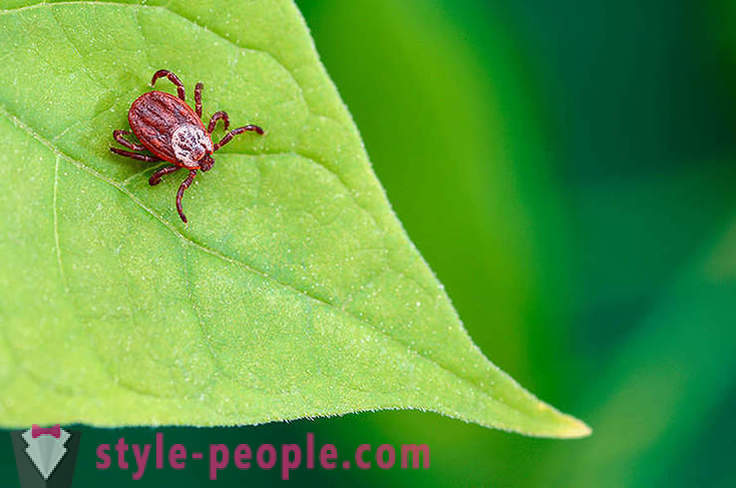What to do if a tick bite
Summer - it's time to walk through the parks and sunbathing on the suburban turf, but about ticks, usually at this point no one remembers, not for mushrooms as you're in the coniferous forest has gone, where they come from? In fact, ticks are everywhere. And they are very dangerous. Tells what to do if you muck this creeping snatched.

How do they attack?
There is a myth that the alleged mites live in the trees and fall on us during our walks. This is not true: the most dangerous areas in the forest - a grass and bushes on which the mite moves vertically from bottom to top. These insects have an amazing ability to feel the heat emanating from the man, so the chance of becoming the object of attack tick in June (when its biological activity is expressed especially) high. And you do not necessarily a long time to lie on the grass during a picnic or move to relieve himself in the neighboring bushes (as it is sad, but it is in this intimate setting girls most often the victims of an insect) - simply take a stroll in the park that evening to discover chitin bastard where -What in the neck. Keep in mind that mites love warm places and quickly and quietly get over there under the folds of clothing.
What do they carry?
Ticks can be carriers of dangerous infections, which include tick-borne viral encephalitis, Crimean hemorrhagic fever, Lyme disease, tularemia, typhus, human granulocytic anaplasmosis, Q fever, and others. Natural foci of these infections are in temperate climates, the most active of which are connected in a forest-steppe plain landscapes. Natural foci of hemorrhagic fever are found in the south of Russia (Kalmykia, Dagestan, Ingushetia, Krasnodar, Stavropol, Rostov, Volgograd and Astrakhan regions).
What to do if you are bitten?
Mite - a small insect, typically up to 1 mm, so it is quite difficult to notice, but you can not feel the bite because the tick saliva contains an anesthetic. Only it was filled with blood, insect blown up to two centimeters in diameter and, of course, becomes visible to the naked eye. But it is important to remember that the longer the tick is hanging on to you, the higher the chances of transmission of the causative agent of the disease if the tick - his support. As soon discover for yourself the tick, it immediately pulls! It can be removed with tweezers or manicure thread, tying it around his head, the movement should be raskachivayusche-twisted. Try not to crush the parasite (he'll still come in handy), and wound-treated with a disinfectant solution. Do not lubricate the tick with oil and fat, burn, remove your fingers, squeezing his body, as this may lead to complications, especially if the tick is infected: through the bite of the tick salivary glands in the body gets infection. When pull out the tick, place it in a jar and take me to the lab.
Do not panic!
Even if it turns out that mites - encephalitis or carrier of Lyme disease, it is not the fact that you are sure to get infected. But check need anyway: in 10 days after being bitten hand over blood on Lyme disease and encephalitis. If your tick on the results of the study proved to be "healthy," but you have "protracted SARS of unknown etiology", from which all else fails, find a good infectious disease physician: may tick transmitted infections, which are not as dangerous as encephalitis or disease lime, and laboratory, which hit your mite, simply does not check material availability.













































